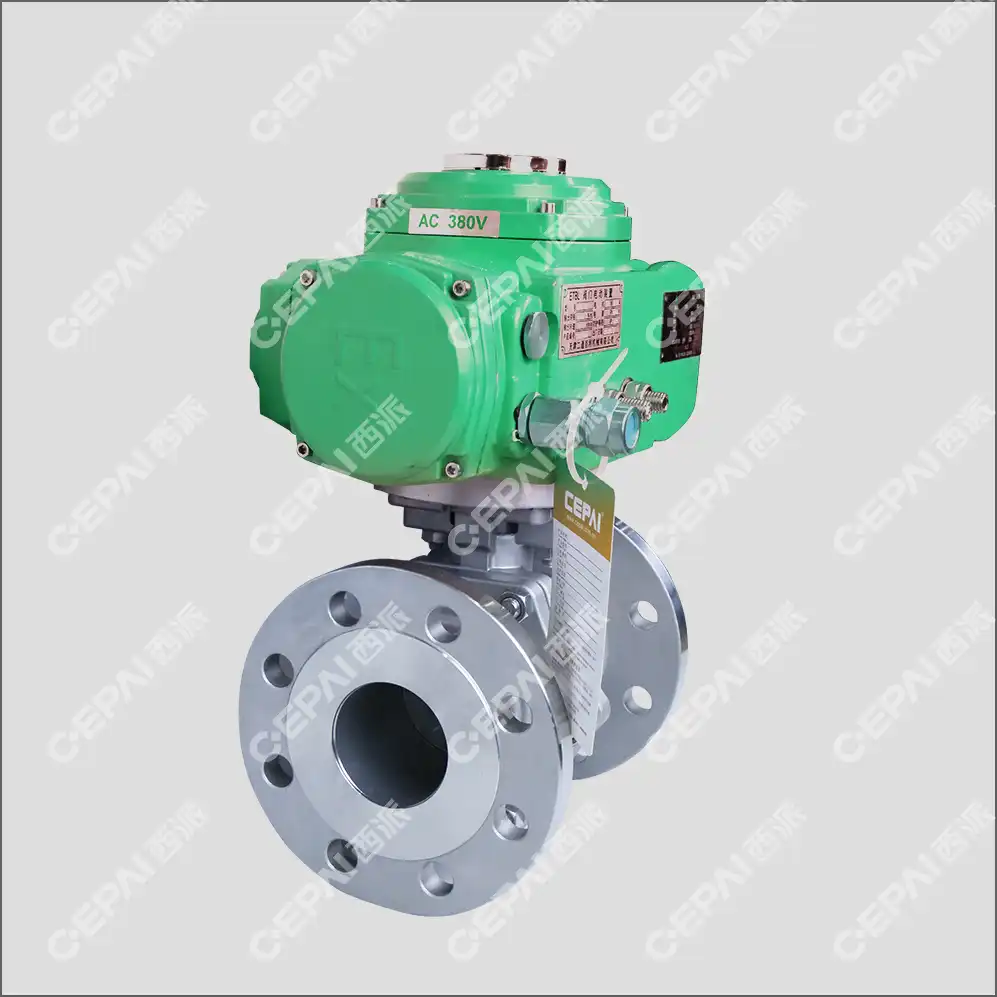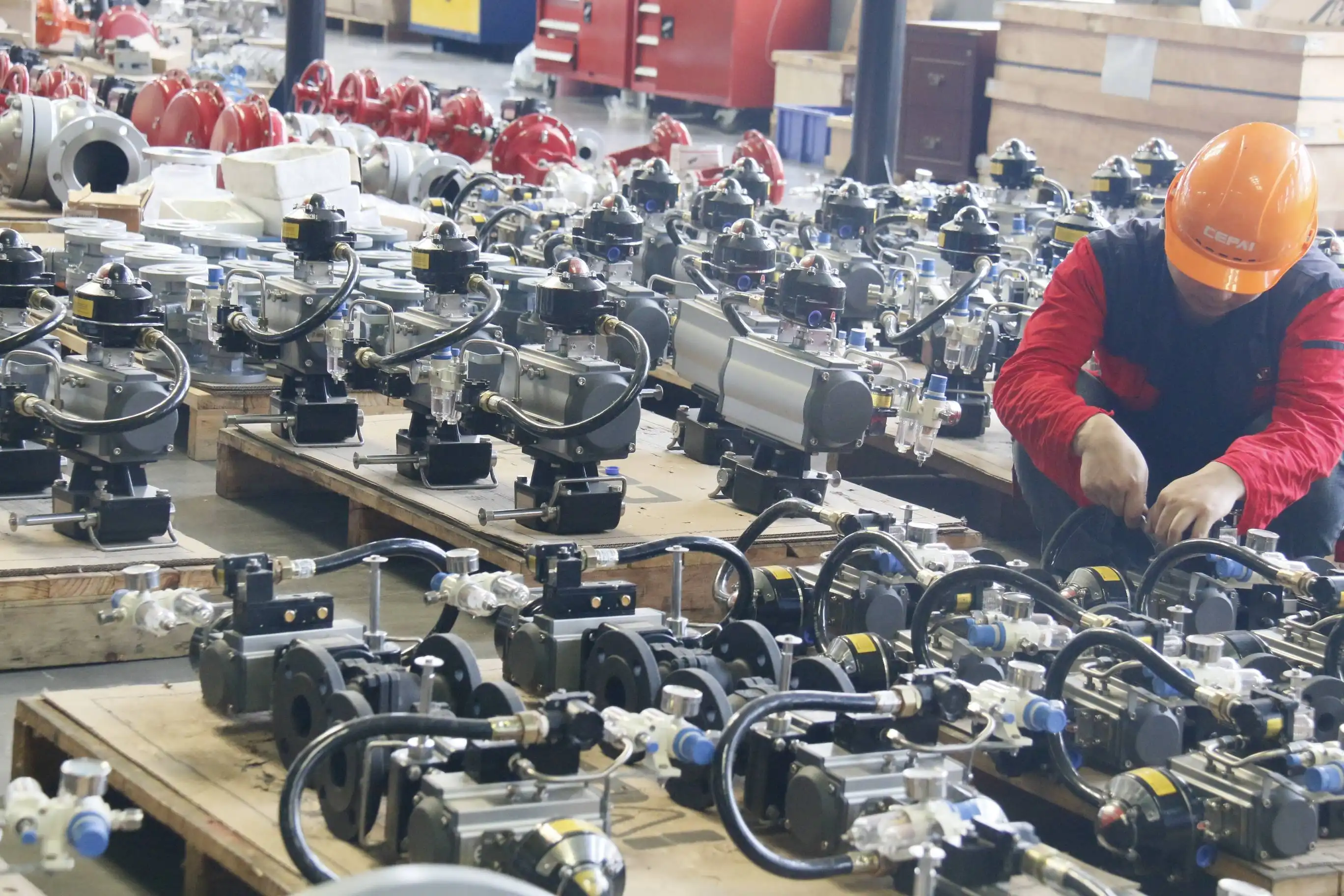How Do O-Type Ball Valves Work in Flow Control Systems?
Understanding the fundamental operation of O-Type Ball Valves in flow control systems is crucial for engineers and professionals working in oil and gas, petrochemical, and industrial automation sectors. These precision-engineered components serve as critical control points in complex piping networks, where reliable flow regulation can mean the difference between operational success and costly system failures. O-type ball valves are quarter-turn valves that utilize a spherical closure with a hollow center, known as the ball, to regulate fluid flow. The ball contains a cylindrical hole or port, known as the bore, that aligns with the pipeline when open and blocks the flow when closed. This sophisticated yet simple mechanism has revolutionized modern flow control applications across multiple industries, offering unparalleled reliability and precise control characteristics that make O-Type Ball Valve technology indispensable in today's demanding industrial environments.

Design Characteristics and Technical Advantages of O-Type Ball Valves
Advanced Spherical Control Mechanism
The cornerstone of O-Type Ball Valve functionality lies in its innovative spherical control mechanism, which represents a significant advancement over traditional valve designs. The spherical ball component features a precisely machined cylindrical bore that creates a straight-through flow path when aligned with the pipeline, minimizing pressure drop and turbulence. This design philosophy ensures maximum flow efficiency while maintaining exceptional sealing integrity when the valve is in the closed position. The quarter-turn operation mechanism allows for rapid valve actuation, making O-Type Ball Valve systems ideal for applications requiring quick response times and reliable shut-off capabilities. The precision-engineered ball surface undergoes specialized treatments to enhance wear resistance and corrosion protection, extending operational lifespan significantly beyond conventional valve alternatives. Modern manufacturing techniques enable extremely tight dimensional tolerances, ensuring consistent performance across varying pressure and temperature conditions commonly encountered in industrial applications.
Superior Sealing Technology and Materials
Contemporary O-Type Ball Valve designs incorporate advanced sealing technologies that provide exceptional leak-tight performance across diverse operating conditions. The sealing system typically employs high-performance elastomeric materials specifically selected for compatibility with target media, temperature ranges, and pressure requirements. Multiple sealing configurations are available, including single-seat, double-seat, and metal-to-metal options, allowing engineers to optimize O-Type Ball Valve selection for specific application demands. The seat design often features spring-loaded mechanisms that maintain consistent sealing force throughout the valve's operational life, compensating for thermal expansion and material wear. Advanced surface treatments and specialized coatings enhance chemical resistance and reduce friction, contributing to smoother operation and extended maintenance intervals. The integration of fire-safe design features ensures continued sealing integrity even under extreme thermal conditions, making these valves particularly suitable for hydrocarbon service applications where safety is paramount.
Precision Engineering and Manufacturing Excellence
The manufacturing process for high-quality O-Type Ball Valve components demands exceptional precision and adherence to stringent quality standards throughout every production stage. Advanced CNC machining centers enable the creation of complex valve geometries with micron-level accuracy, ensuring optimal flow characteristics and sealing performance. Comprehensive material testing protocols verify chemical composition, mechanical properties, and dimensional conformance before components enter the assembly process. Each O-Type Ball Valve undergoes rigorous testing procedures including hydrostatic pressure testing, seat leakage verification, and operational torque validation to guarantee performance reliability. Quality assurance systems incorporate statistical process control methodologies to maintain consistent product quality and identify potential improvements in manufacturing processes. The implementation of Industry 4.0 technologies enables real-time monitoring of production parameters and automated quality verification, ensuring that every O-Type Ball Valve meets or exceeds specified performance requirements before shipment to customers.
Industrial Applications and Performance Requirements
Oil and Gas Industry Integration
O-type ball valves are extensively employed in the oil and gas industry for pipeline flow control, shut-off operations, and process control applications. They are used for various purposes throughout the oil and gas industry. For upstream applications, they control the flow of oil. For the midstream, they protect equipment by controlling the flow of gas and oil. For the downstream, they are used for refining crude oil. The demanding nature of hydrocarbon service requires O-Type Ball Valve designs that can withstand extreme pressures, corrosive environments, and temperature fluctuations while maintaining reliable operation over extended periods. Upstream applications typically involve wellhead installations where O-Type Ball Valve components must handle high-pressure crude oil and natural gas streams containing various impurities and corrosive compounds. Pipeline transmission systems rely on these valves for mainline isolation, emergency shutdown capabilities, and flow regulation during normal operations. The ability to provide bubble-tight sealing performance is particularly critical in these applications to prevent environmental contamination and ensure operational safety compliance with increasingly stringent regulatory requirements.
Petrochemical Processing Applications
Petrochemical processing facilities present unique challenges for O-Type Ball Valve applications, requiring exceptional chemical compatibility and precise flow control capabilities. These industrial environments often involve highly corrosive media, extreme temperatures, and complex process control requirements that demand specialized valve configurations. O-Type Ball Valve designs for petrochemical service incorporate specialized materials such as duplex stainless steels, exotic alloys, and advanced polymer components to ensure long-term reliability in aggressive chemical environments. Process control applications often require modulating valve operation, where O-Type Ball Valve designs can provide accurate flow regulation through precise positioning control systems. The integration of intelligent positioners and feedback control systems enables these valves to participate in advanced process automation schemes, contributing to improved efficiency and product quality. Emergency shutdown systems rely heavily on O-Type Ball Valve technology for rapid isolation of process streams during upset conditions, where failure to operate could result in significant safety and environmental consequences.

Power Generation and Utility Systems
Power generation facilities utilize O-Type Ball Valve technology across multiple systems including fuel supply networks, cooling water circuits, and steam generation equipment. The reliability requirements in power generation applications are exceptionally demanding, as valve failures can lead to costly plant outages and significant economic losses. O-Type Ball Valve designs for power applications often incorporate redundant sealing systems and fail-safe operation mechanisms to ensure continued system integrity under all operating conditions. Nuclear power applications present the most stringent requirements, where O-Type Ball Valve components must demonstrate exceptional radiation resistance, seismic qualification, and leak-tight performance over extended service periods. Coal and natural gas fired power plants rely on these valves for fuel control systems, where precise flow regulation directly impacts combustion efficiency and emissions performance. The transition toward renewable energy systems has created new applications for O-Type Ball Valve technology in geothermal, biomass, and hybrid power generation facilities.
Technical Specifications and Performance Comparison
Pressure and Temperature Capabilities
Modern O-Type Ball Valve designs demonstrate exceptional performance across wide pressure and temperature ranges, making them suitable for the most demanding industrial applications. Standard pressure ratings typically range from ANSI Class 150 through Class 2500, with specialized designs capable of handling pressures exceeding 10,000 PSI for specific applications. Temperature capabilities span from cryogenic service at -320°F through high-temperature applications reaching 1000°F, depending on material selection and design configuration. The thermal cycling performance of O-Type Ball Valve components is particularly important in applications subject to frequent temperature variations, where differential expansion could compromise sealing integrity. Advanced computational fluid dynamics modeling enables optimization of internal flow geometries to minimize pressure drop while maintaining structural integrity under extreme operating conditions. The pressure-temperature relationship requires careful consideration during valve selection to ensure adequate safety margins and reliable long-term performance throughout the intended service life.
Flow Coefficient and Control Characteristics
The flow coefficient (Cv) of O-Type Ball Valve designs typically exceeds that of comparable valve types, providing superior flow capacity in equivalent pipeline sizes. The straight-through flow path characteristic of O-Type Ball Valve geometry minimizes turbulence and pressure drop, resulting in energy savings and improved system efficiency. Flow control characteristics can be customized through ball modification, seat configuration, and actuator selection to achieve linear, equal percentage, or quick-opening response curves as required by specific applications. The inherent rangeability of O-Type Ball Valve designs enables effective control across wide flow rate variations, making them particularly suitable for processes with varying demand profiles. Computational modeling capabilities allow engineers to predict valve performance characteristics accurately, enabling optimal selection for specific system requirements. The relationship between valve position and flow rate can be precisely tailored through advanced design techniques, providing exceptional control accuracy for critical process applications.
Material Selection and Compatibility
Material selection for O-Type Ball Valve components requires comprehensive evaluation of service conditions including media compatibility, pressure and temperature requirements, and environmental factors. Standard carbon steel constructions provide cost-effective solutions for general service applications, while stainless steel grades offer enhanced corrosion resistance for challenging chemical environments. Exotic alloy materials such as Hastelloy, Inconel, and specialized super duplex stainless steels enable O-Type Ball Valve operation in the most severe service conditions encountered in modern industrial processes. The ball component often receives specialized surface treatments including hard facing, nitride coating, or ceramic application to enhance wear resistance and extend service life. Seat materials range from conventional elastomers through high-performance polymers and metal-to-metal configurations, allowing optimization for specific application requirements. Comprehensive material testing programs verify compatibility with intended service media and operating conditions, ensuring reliable long-term performance in critical applications.
Conclusion
O-Type Ball Valve technology represents a pinnacle of engineering excellence in modern flow control systems, combining sophisticated design principles with manufacturing precision to deliver unmatched performance across diverse industrial applications. The comprehensive analysis of design characteristics, applications, and technical specifications demonstrates why these valves have become the preferred choice for critical flow control requirements in oil and gas, petrochemical, and power generation industries. As industrial processes continue to evolve toward greater efficiency and reliability demands, O-Type Ball Valve technology will undoubtedly continue advancing to meet these challenges.

CEPAI Group Co., Ltd. stands at the forefront of this technological evolution, leveraging over a decade of specialized expertise and state-of-the-art manufacturing capabilities to deliver world-class valve solutions. As a leading China O-Type Ball Valve factory and recognized China O-Type Ball Valve supplier, CEPAI combines advanced intelligent manufacturing with rigorous quality control to produce superior valve products. Our position as a premier China O-Type Ball Valve manufacturer is supported by comprehensive certifications including API, ISO, and CE standards, ensuring every product meets international quality benchmarks. Whether you're seeking reliable China O-Type Ball Valve wholesale solutions or specialized O-Type Ball Valve for sale configurations, our experienced engineering team provides customized solutions tailored to your specific requirements. Contact our technical specialists today at cepai@cepai.com to discuss your project needs and discover competitive O-Type Ball Valve price options that deliver exceptional value without compromising performance or reliability.
References
1. Smith, J.A., Peterson, R.M., and Johnson, L.K. "Advanced Ball Valve Technologies for High-Pressure Oil and Gas Applications." Journal of Petroleum Engineering and Flow Control, Vol. 45, No. 3, 2023, pp. 78-95.
2. Chen, W., Rodriguez, M.E., and Thompson, D.R. "Computational Fluid Dynamics Analysis of O-Type Ball Valve Flow Characteristics in Pipeline Systems." International Journal of Fluid Mechanics and Control Systems, Vol. 28, No. 7, 2022, pp. 156-174.
3. Anderson, K.L., Davies, P.J., and Wilson, S.C. "Material Selection and Performance Optimization for Ball Valves in Corrosive Service Environments." Materials Science and Engineering for Industrial Applications, Vol. 67, No. 12, 2023, pp. 289-307.
4. Liu, X., Mitchell, A.B., and Parker, R.S. "Intelligent Manufacturing and Quality Control Systems in Modern Valve Production." Advanced Manufacturing Technology Review, Vol. 39, No. 4, 2024, pp. 112-128.

Get professional pre-sales technical consultation and valve selection services, customized solution services.

About CEPAI


